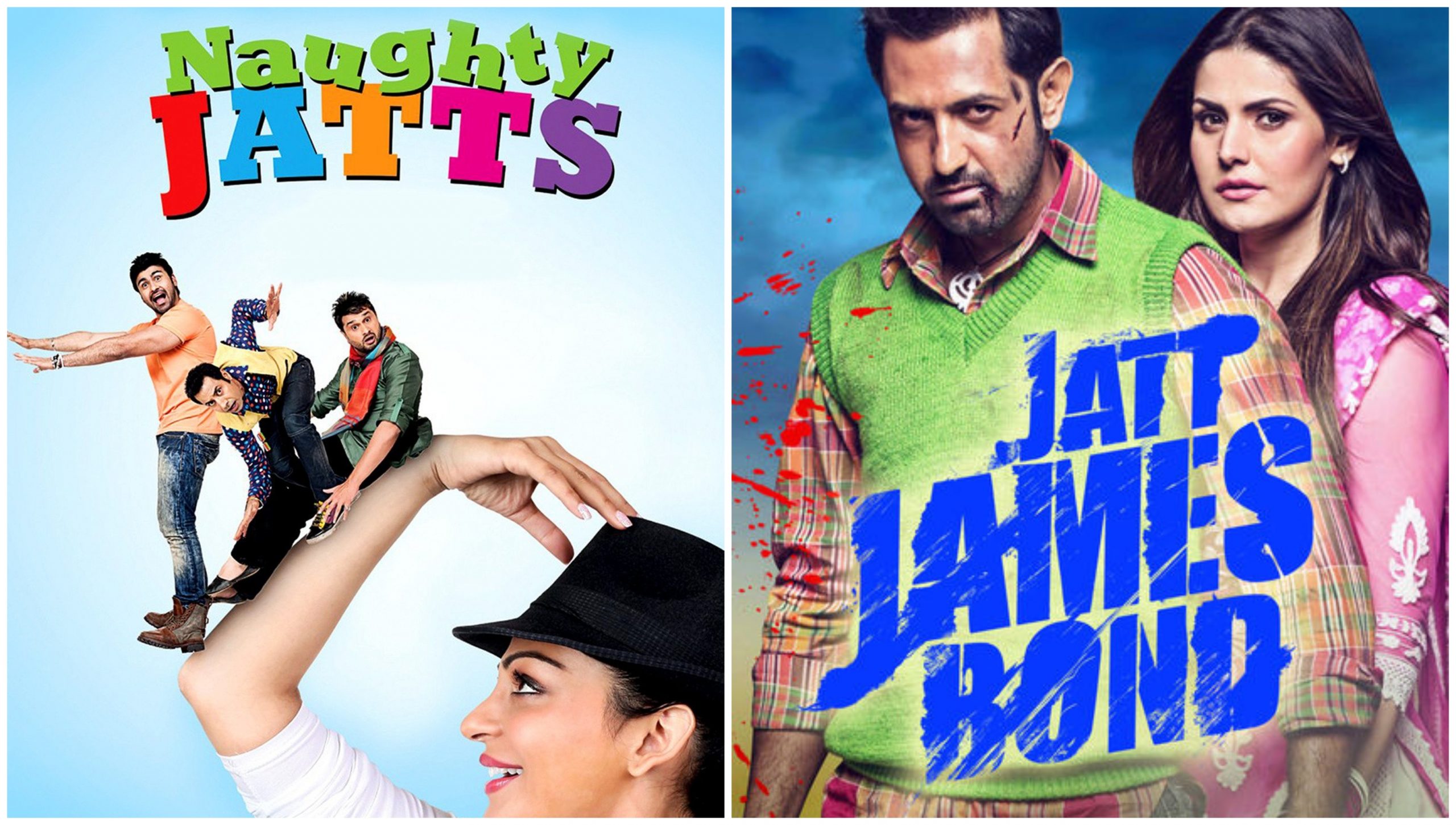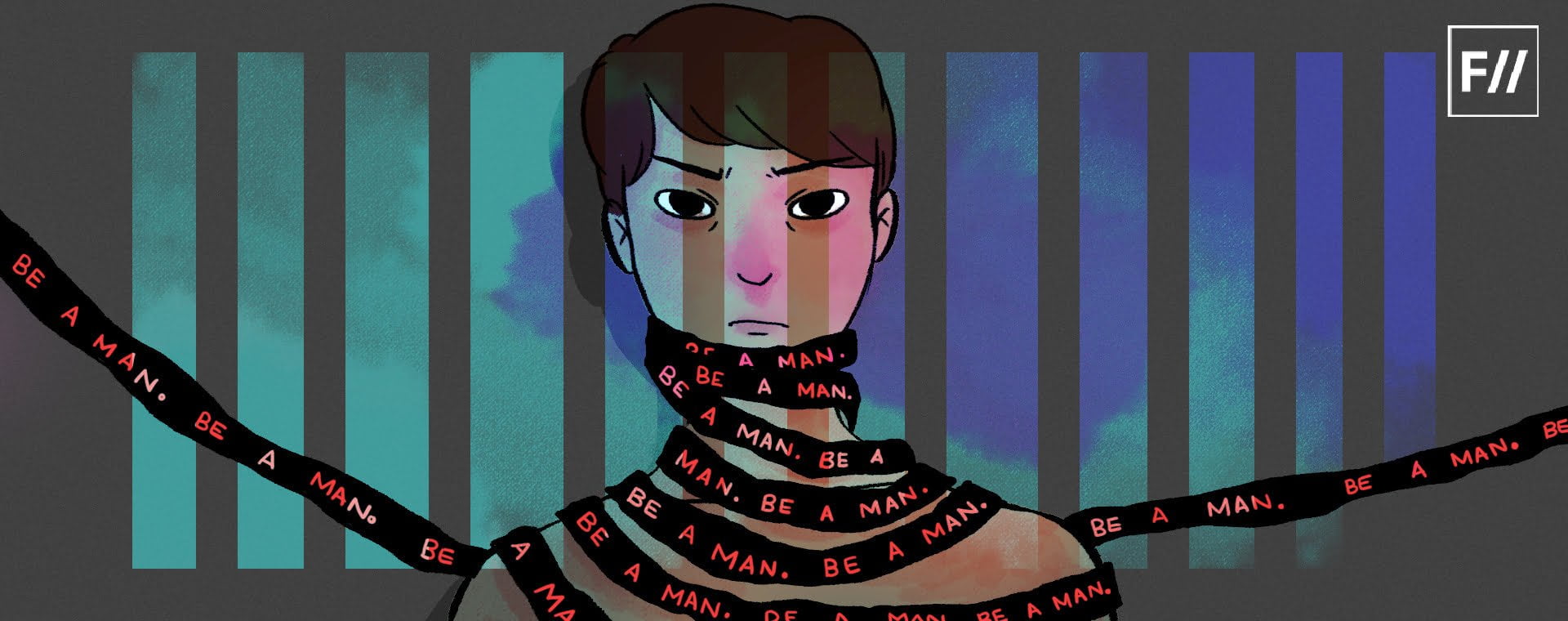In the present day, the term ‘toxic masculinity’ may be understood as a form of regressive, violent and abusive behaviour exhibited by men. There are a number of psychological ingredients that form a part of this dangerous concoction such as emotional detachment, aggression, intimidation, violence and a lot more. It is fairly important to understand that toxic masculinity does not define what men are but describes what men do. Thus, it is not a biological trait inherent in men from birth. It is a social construct, which reaffirms the often quoted cliché phrase, ‘gender is a social construct‘.
Toxic masculinity also affects men. In an article published by Feminism in India in 2016, the author had succinctly described some of the ways in which toxic masculinity adversely affects men. And in this article, we try to explore the forms of toxic masculinity in the Punjabi culture, something that is evident from a critical analysis of Punjabi traditional dance forms like Bhangra and Giddha along with other media genres like films, songs etc.
A few additional examples might reveal a number of toxic qualities of hegemonic masculinity that Punjabi men exhibit. These could be like having a ‘gym body’, being the ‘owner of his wife’ and stripping the woman of her sexuality to an extent that a mere mention of her name shall be regarded as an act of debauchery.
Punjabi Media And Their Role In The Sustenance Of Hegemonic Masculinity
The regressive plot in every Punjabi Film:
Usually the diegesis in all the Punjabi films includes a Punjabi Jatt hero, who takes upon himself to preserve the Punjabi ethos which is usually ingrained in patriarchal manifestations like preserving the honour of women and ensuring the existence of a traditional family. This diegesis has stayed the same while the geography of this patriarchal project keeps ranging between rural villages of Punjab to cities in other countries like Canada, etc. Almost all the Punjabi films are laced with humor full of hate for any masculinities other than the regressive hegemonic one. These toxic jokes not only promote hegemonic masculinity but also endorse them happily.
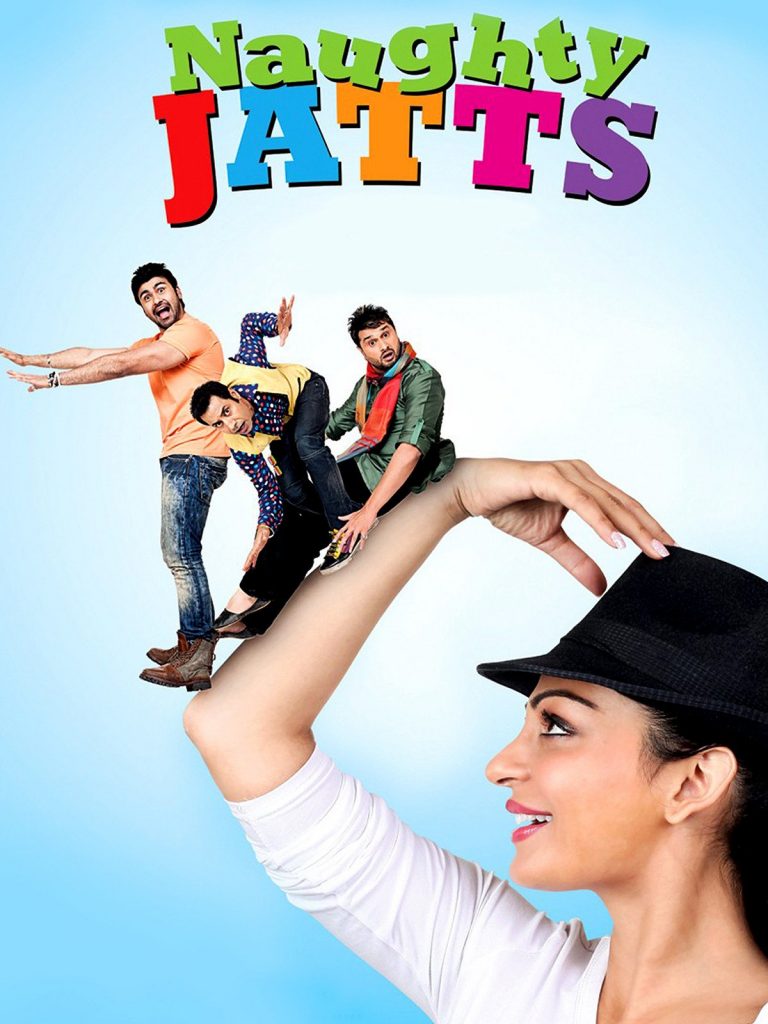
In addition to this problematic mindset, the Punjabi hegemonic masculinity also endorses a certain body shape. Examples of such regressive films are countless. For instance, a certain Punjabi film titled ‘Naughty Jatts’ has scenes where the body shape of a character is compared to that of a ‘gainda’ (rhinoceros). A few additional examples might reveal a number of toxic qualities of hegemonic masculinity that Punjabi men exhibit. These could be like having a ‘gym body’, being the ‘owner of his wife’ and stripping the woman of her sexuality to an extent that a mere mention of her name shall be regarded as an act of debauchery.
The latter is showcased in a film titled Jatt James Bond where a senior police officer jeeringly taunts his junior and calls him a ‘pervert’ for merely mentioning the name of a complainant’s wife in the F.I.R. The women in Punjabi families are usually depicted to have been indoctrinated to ingrain patriarchy in their actions and lifestyle. Women in Punjabi films usually appear only in the roles of mothers, sisters or wives.
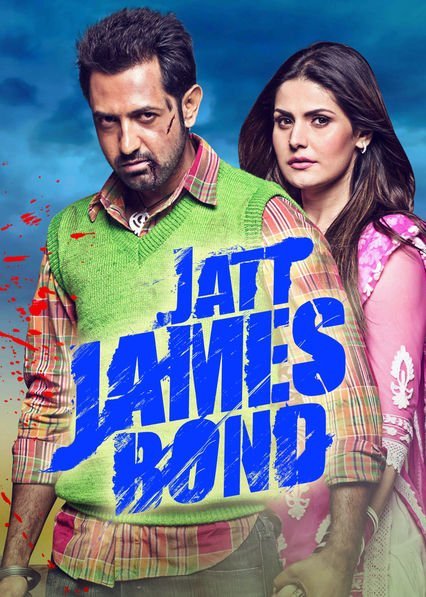
Hegemonic Masculinity In Traditional Dance Forms
The development of hegemonic masculinity in Punjab, to a great extent, lies in the act of erasing femininity under the pretext of “protecting women”. An interesting way of studying this could be analysing the levels of popularity of Bhangra and Giddha, both being the Punjabi traditional dance forms. The only difference is that Bhangra is ascribed to Punjabi men and Giddha is ascribed to Punjabi women.
Bhangra has seen worldwide popularity and it is regarded by Punjabi films as the very ingrain of Punjabi culture. Moreover, since Bhangra has achieved a worldwide reach, it is usually projected as a cultural practice that has evolved with modernity. On the other hand, the representation of Giddha in Punjabi films is limited to the courtyard of a Punjabi rural household during occasions like ladies sangeet. Perhaps, Giddha is seen as something which is incompatible (and outdated) with the cultural evolution of the changing times, because it never managed to cross the limits of the courtyard.
This segregation of these two dance forms in spatial terms indeed is an alter ego of the space demarcated for different genders in the Punjabi society.
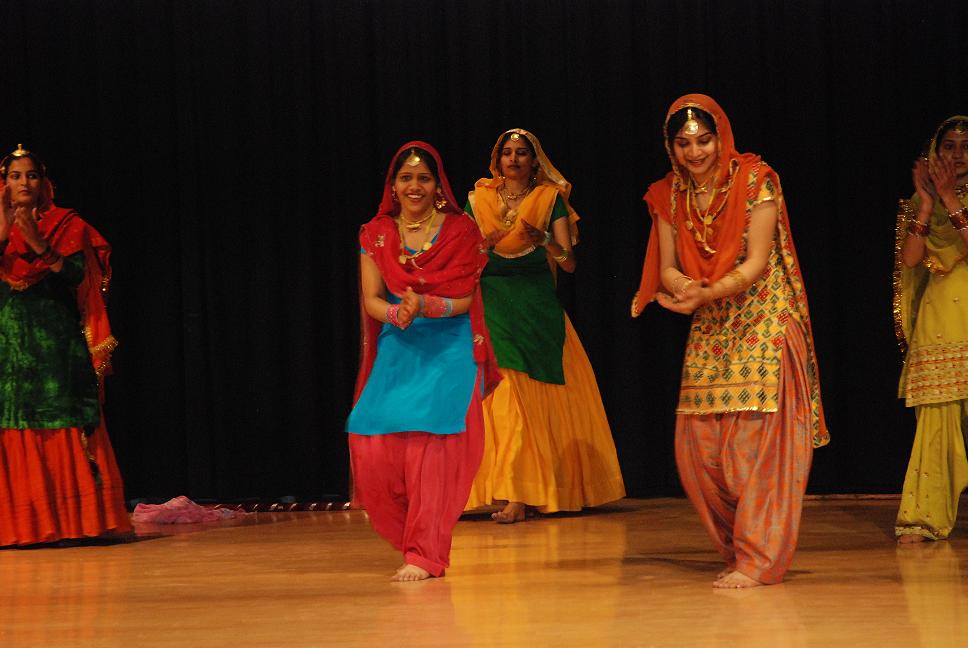
Interestingly, an entire movie named “Ashke” has been made on the diasporic reach of Bhangra. A very famous dialogue from “Ashke” is that of a certain character named ‘Pamma’ who proudly advises his Punjabi male student that if the latter really wants to learn Bhangra then he should learn to “stand like the boys of Khalsa College”. A critical study of the Khalsa College culture would reveal that this comment finds its roots in a deeply seated form of hegemonic masculinity. The ‘Khalsa college way of standing’ finds mention at various junctures in the film, one such other juncture is when a female character is seen to flirtatiously comment that Pamma’s way of standing is like that of Khalsa College boys as compared to ‘less-than-manly’ ways of the SSK college boys.
The film indeed symbolises Bhangra, associated with only Punjabi men, as something a lot more than dance. The film, like the Punjabi society, limits Bhangra only to masculine space. This is evident from the fact that the protagonist, a schoolteacher, was mentoring an all-male student’s circle. The comment by the protagonist, that ‘the good thing about Bhangra doers is that even in bad times all they need is a slap on their thigh to rise up and take charge of the situation’, essentially reveals one of the many ways in which every other ingredient of Punjabi hegemonic masculinity is supposed to make men into hard-hearted, emotionally detached hegemons, even if they are in need of cathartic relief.
Punjabi Songs and Hegemonic Masculinity:
The qualities that comprise the Punjabi hegemonic masculinity are revealed very lucidly both in old and new Punjabi songs alike. For instance, a famous song titled “Putt jattan de” (Sons of Jats) by Surinder Shinda from the 1980s enlists toxic qualities like carrying batons on shoulders, challenging whoever they encounter on their path, being overly exuberant with long necks laced with gold jewelry, having a capacity to down 40 bottles of alcohol, having the courage to have their way with any woman in the village, amongst many others.
The song was later used in the 1983 film “Putt Jattan De”.
The video of this song depicts tall and heavily built men endorsing the hegemonic masculinity as narrated in the lyrics. There is indeed a brief moment in the video of the song where a certain group of burly men can be seen to be ordering the women to step aside so that they can continue with their masculine ways of moseying through the ‘man’s world’.
In Punjab, the major population of the filmgoing audience comprises of men. This is a fact that one will notice by merely stepping foot in any theatre in Punjab that runs a film with a hegemonically masculine character.
A more recent but equally regressive song titled “Family di Member” involves lyrics where a certain male character is shown to proudly recite the qualities of an ideal wife. These qualities are as patriarchal as they can get. The character is seen to ask for a wife who stays behind the Purdah, takes charge of the kitchen, tends to the needs of the elders in the family, possesses the qualities asked for by his mother, who is fair in complexion and consents to be kept inside a cage made of gold (sonne di dabbi), amongst other regressive demands.
Reception of Punjabi Films
In Punjab, the major population of the filmgoing audience comprises of men. This is a fact that one will notice by merely stepping foot in any theatre in Punjab that runs a film with a hegemonically masculine character. This dominant, overwhelming and exclusive presence of men creates a space where hyper masculinity can be publicly encouraged without being fettered by the presence of female figures in the audience.
Hooting, passing lewd and misogynistic comments is commonplace in the cinema halls running such Punjabi films. Such toxic behavior that is imbibed in the film theatres finds a further amplified expression on the streets, Chandigarh’s Gedi Route is one of the many such examples. This infamous roadway has become one of many places in India where harassment of women and passing of lewd comments have been transformed into a toxic suburban culture.
Ending Note
In the present day, unfortunately, toxic masculinity continues to have a strong (at times invisible) influence over the cultural practices and norms in our daily lives.
We, your authors, have spent the last four years in our University which is located in the interiors of Sonipat, Haryana. During this fairly long time, we have been witness to (and at times, at the receiving end of) several instances and prominent expressions of toxic masculinity which form a dominant part of the culture in Northern India (and elsewhere).
This article has been written with the longing to share our own lived experiences and critically engage with one the most regressive-behavioral traits of our patriarchal society.
Anirban Chanda is a final year law student at Jindal Global Law School. His academic interests include reading and writing about the interface between Gender and Constitutional rights. You can find him on Twitter.
Sahil Bansal is a final year law student at Jindal Global Law School. His academic interests include reading and writing about Law, Gender, and Life. You can find him on LinkedIn, Twitter, Instagram and Facebook.
